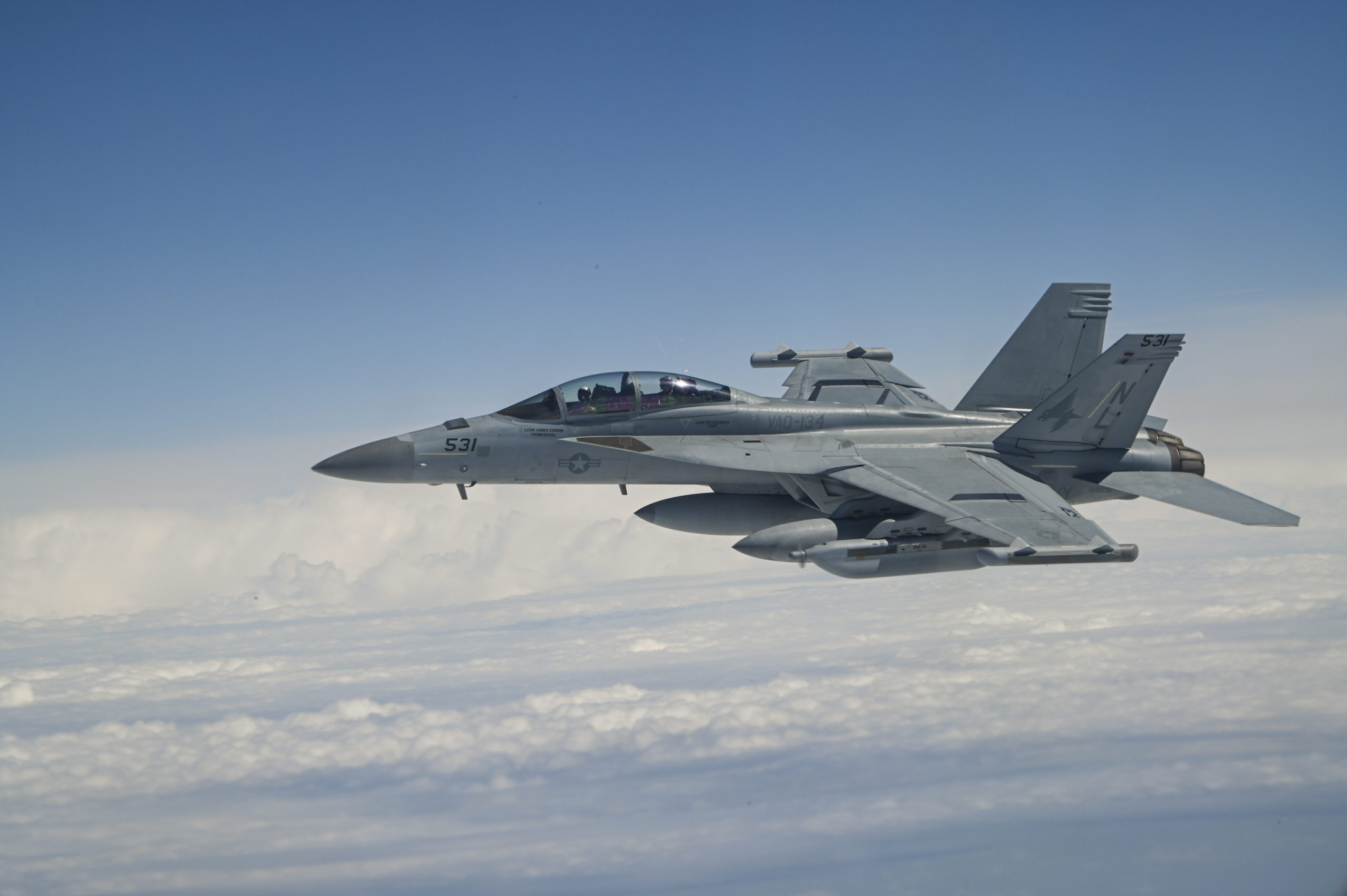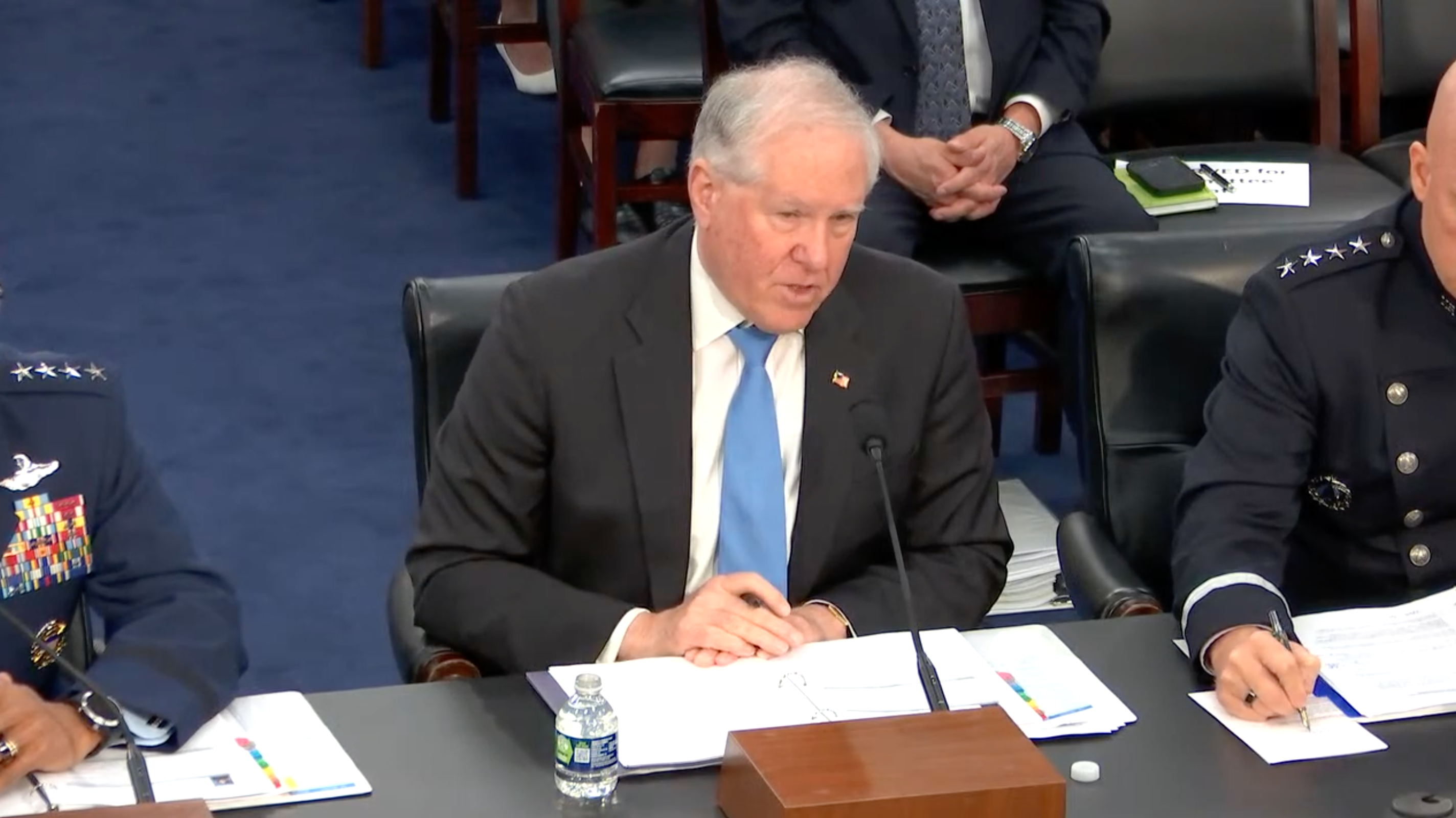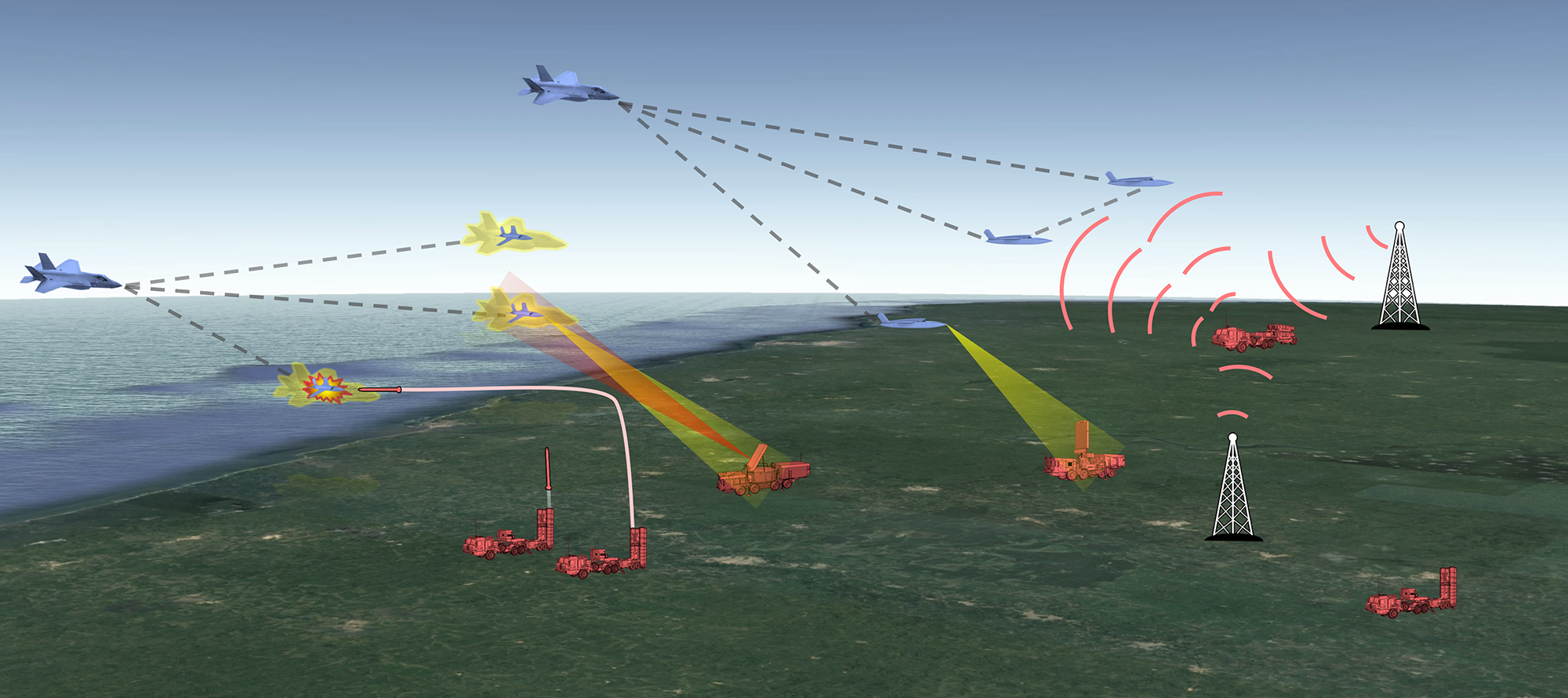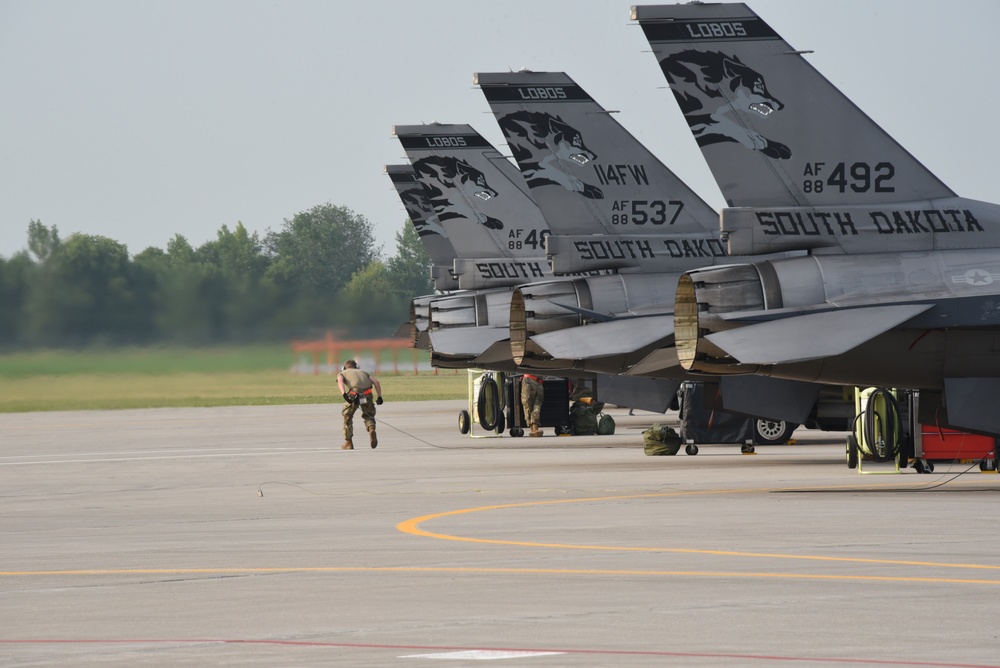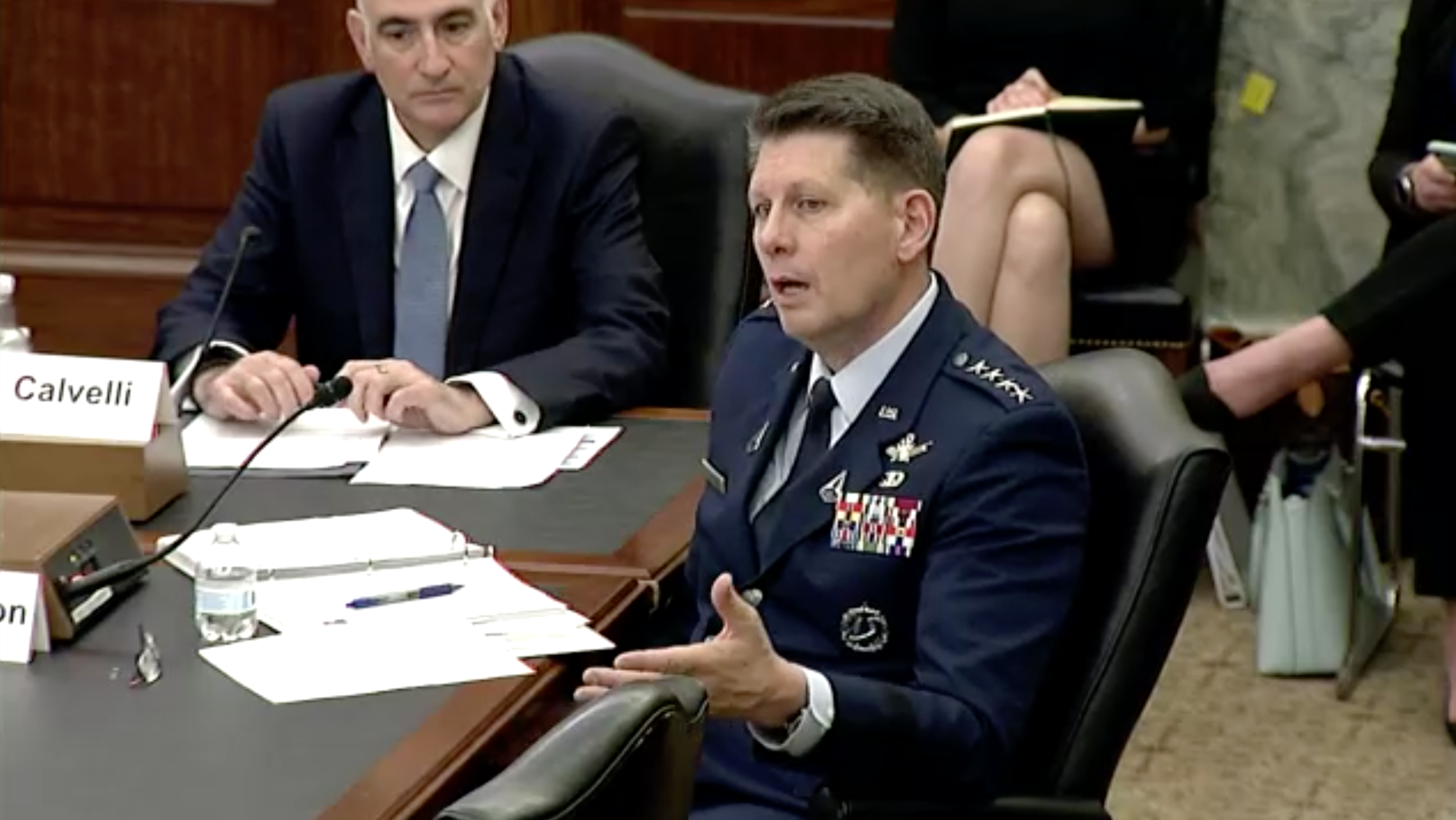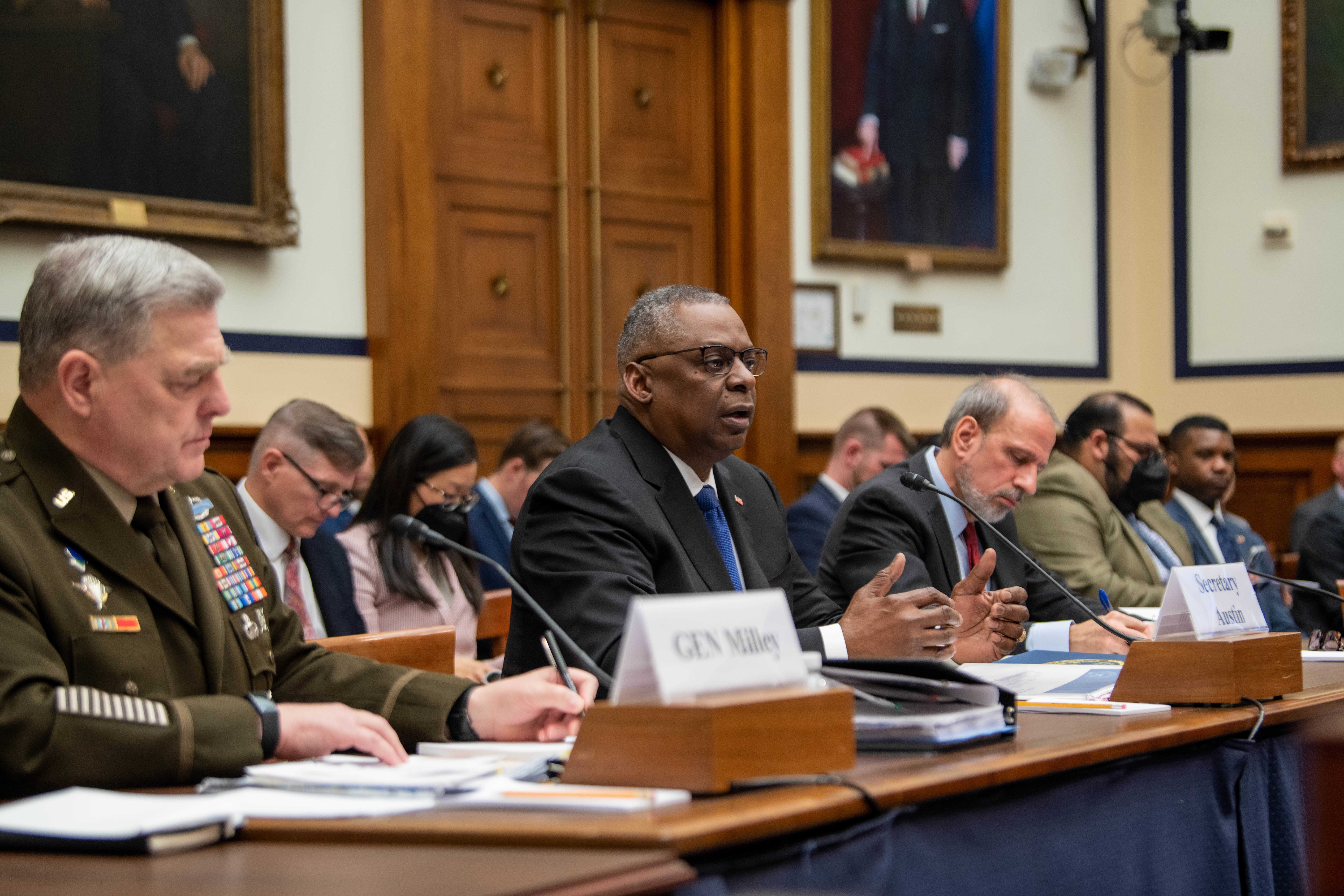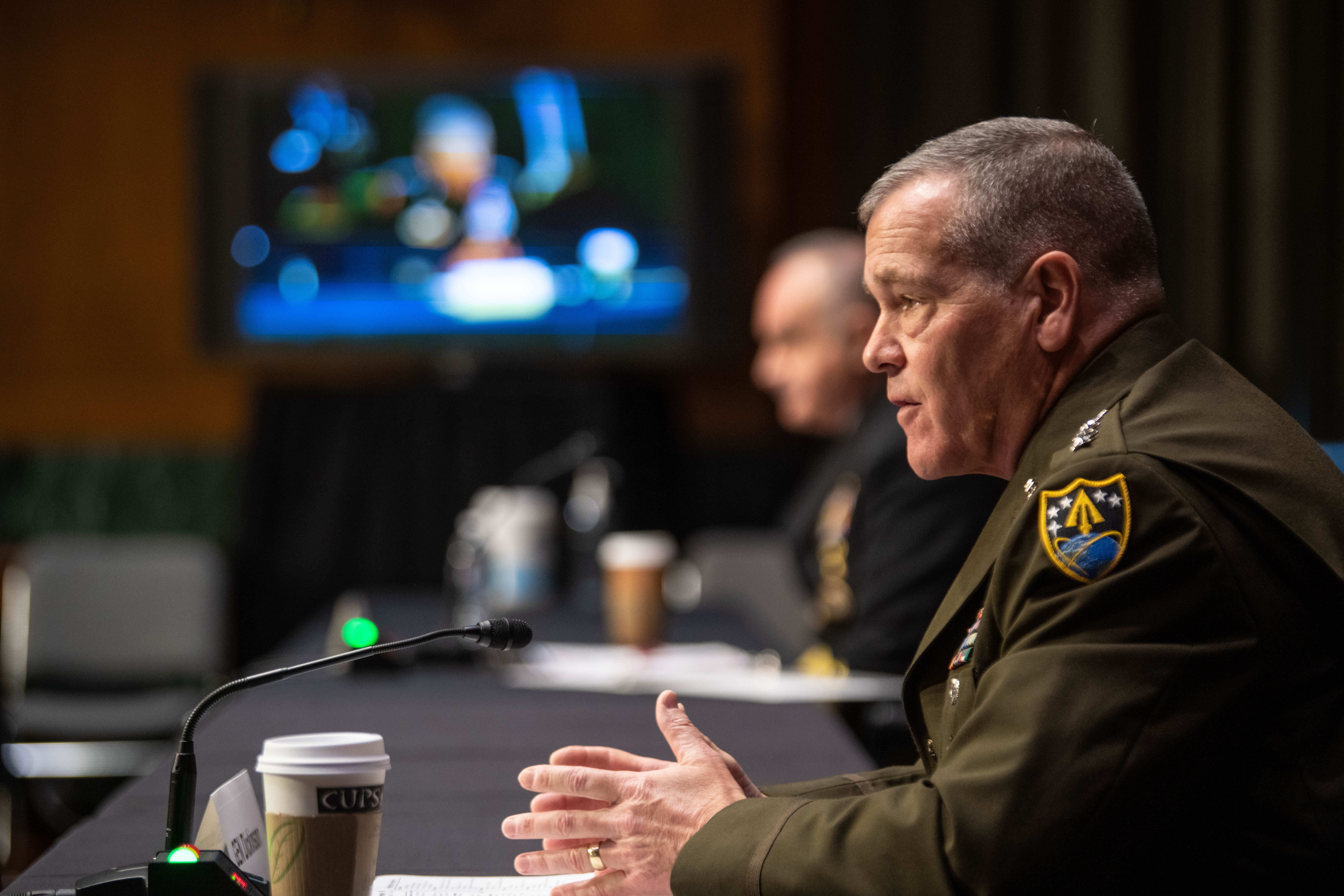Navy E/A-18 Growlers are conducting NATO enhanced air policing in Eastern Europe near Ukraine to show Russia that the U.S. stands ready with electronic warfare capabilities. But what the Navy is doing also highlights what the Air Force can’t.
Pilots from Navy Electronic Attack Squadron 134, or VAQ-134—nicknamed “Garudas”—who spoke to Air Force Magazine at Spangdahlem Air Base, Germany, said they were practicing integration with Air Force F-16s and flying NATO missions with EW pods turned off.
But soon, Navy divestment will eliminate that joint force capability before the Air Force replaces it.
“We can employ air to air, but we can also collect [electronic support measures] data and employ in the electromagnetic spectrum, both offensively and defensively,” said Navy Lt. Cmdr. Andrew Mays while showing off an E/A-18 Growler deployed to Spangdahlem from Naval Air Station Whidbey Island, Wash.
“We have a unique set of skills that mix fourth-gen fighters with an [EW] platform,” added Mays, wearing the Garudas’ characteristic maroon-accented green flight suit. “We maintain that capability, but we’re not using those currently.”
Lt. Cmdr. James Corrin, also a Growler pilot deployed to Spangdahlem, explained that the aircraft are postured defensively in a transparent way meant to demonstrate to adversaries the U.S. joint force capabilities positioned on NATO’s eastern flank.
“There’s no confusion about what we’re doing here,” he said. “Those all have capabilities that could be used. But at this point, we’re just maintaining our air policing and that defensive posture.”
The Navy pilots are, however, preparing for local flights and discussing with local F-16 squadrons how to better integrate their capabilities into the joint force. They also stand ready to use EW, if needed.
“We’re just giving more options to NATO,” Corrin said.
VAQ-134 is an expeditionary squadron divided evenly between carriers and joint force support. The Growler is a modified F/A-18 with foldable wings for use on a carrier, and it carries EW pods in place of most munitions. For the NATO mission, the platform is armed with AIM-120 advanced medium-range air-to-air missiles.
The unit had been readying for deployment to Japan on a regular force rotation when they were directed in March to support the Russia deterrence effort on NATO’s borders.
When the Growlers’ deployment was announced, a senior defense official insisted that the aircraft would not assist Ukraine by suppression of enemy air defenses or jamming Russian cruise missiles within their range.
“They are not there to engage Russian assets. That is not the goal,” the official told journalists in a March 28 telephone briefing. “They are there, as all of the other aircraft that we have devoted to this mission, … to reinforce our deterrence posture on the eastern flank.”
The USS Harry S. Truman‘s carrier air wing, including squadrons of Marine Corps F/A-18E/F Super Hornets and Navy EA-18 Growlers, also included electronic warfare capabilities, the defense official said. The Air Force does not have assets with dedicated electronic warfare capabilities on the eastern flank.
An Air Force Capability Gap
Retired Lt. Gen. David A. Deptula, dean of AFA’s Mitchell Institute for Aerospace Studies, said the deployments highlight a gap in Air Force capabilities ever since the retirement of the F-4G Phantom in 1996 and the EF-111 Raven in 1998.
“Part of the impact of decommissioning the EF-111 force was that a very experienced electronic warfare crew force or personnel were scattered to the four winds,” said Deptula, who as commander of Operation Northern Watch in Iraq in 1998-99 regularly employed the Growler’s predecessor, the EA-6B Prowler, to jam Iraqi acquisition radars of its surface-to-air missile systems.
“The Air Force tried to make the case that stealth was a form of electronic warfare, and it really is not,” Deptula explained.
“A key characteristic of electronic warfare is to be able to move and counter move,” he added. “There are other elements of electronic warfare that we want to be able to conduct from platforms designed solely to do that.”
In recent years, Air Combat Command head Gen. Mark D. Kelly has said China’s and Russia’s EW gains keep him up at night. Air Force leaders have also voiced concerns that development of new electronic warfare and electromagnetic spectrum operations are moving too slowly. In June 2021, ACC stood up the 350th Spectrum Warfare Wing at Eglin Air Force Base, Fla., to pursue dominance in the electromagnetic spectrum.
Fifth-generation F-22 and F-35 fighters have inherent electronic warfare capabilities. In February, the Air Force said that it had achieved initial operating capability of the Legion Pod, an infrared search-and-track sensor designed for integration with the F-15C Eagle. All F-16s can carry self-defense jamming pods, while F-16CJs have upgraded EW sensors for suppression of enemy air defenses (SEAD) with AGM-88 High-speed Anti-Radiation Missiles (HARM).
A Department of the Air Force spokesperson told Air Force Magazine that the Air Force relies on a memorandum with the Navy to maintain five expeditionary VAQ squadrons for use in joint missions that require offensive EW operations.
“Air Force EW efforts are still primarily focused on maintaining and updating platform-specific self-protection capabilities,” the spokesperson said in a statement.
Deptula said that’s not enough.
“Less than 25 percent of our combat force are made up of those advanced technology platforms,” he said. “You don’t have sufficient electronic warfare capability.”
L3 Technologies is helping the Air Force to develop the EC-37B Compass Call electronic warfare aircraft to provide improved electronic attack capabilities, but ACC does not plan to field the first five platforms until 2023. Still, the Air Force described the EC-37B attack capability as “limited.”
“The Air Force’s Electromagnetic Warfare (EW) focus is primarily centered on defensive capabilities to limit detection and increase aircraft survivability with an effort to conduct limited Electromagnetic Attack (EA) via the EC-130H/EC-37B,” the Air Force said in a statement.
The Air Force is planning a range of new systems, including the F-15’s Eagle Passive Active Warning Survivability System (EPAWSS), but most are defensive.
Deptula believes the Air Force decision not to develop EW comes from an empty promise from the other services.
“Part of what drove the elimination of the EF-111, and the reduction in focus on electronic warfare, was the belief that joint warfare, our joint brothers and sisters, would pick up the load,” Deptula said. “The other services have not.”
And the Navy Growlers now integrating with the Air Force on the eastern flank will soon go away.
The fiscal 2023 defense budget plans for the Navy to divest all of its non-carrier-based Growlers by fiscal 2025. The Air Force did not say how its memorandum with the Navy would be honored if the joint force Growlers are divested.
Ukraine does not have EW aircraft of its own, and nearby U.S. Growlers lack the authority to engage their pods in support of Ukraine. DOD has, however, included in recent aid packages to Ukraine nondescript “electronic jamming equipment.”
Deptula said the war waged by Russia in Ukraine highlights the need for aircraft with SEAD capabilities “across a spectrum of conflict” to fight peer adversaries.
“This is the kind of capability that we need to be able to prepare for the future contingencies that we might have to face,” he said.
“[Are] all you need … these new modern fighters? No, you need more than that,” he said. “Even though these aircraft are not survivable in the highest demanding fight, they can be used in other contingencies where electronic warfare is so important.”
